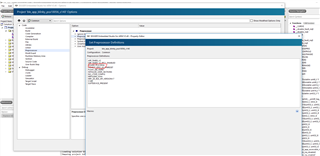I am trying to make the custom_board.h header file but I have some questions. I am using the PCA10040.h as a starting point. However I am confused on some of the things included for in that file
1. What's LED_START, LED_STOP and is that necessary?
2. Same for Buttons
3. What is the difference between SER_APP_RX_PIN and RX_PIN_NUMBER and SER_CON_RX_PIN? They all are UART pins so I am carious why 3 different definitions
4. I need a chip disable signal and I2C for my board, I have defined them starting from line 58 to 63, is it done properly?
5. How do I call this header file in the c file? Is it #include "custom_board.h" first in the boards.h file and that way #include bsh.h would work in the c file or do I need to do something different?
#ifndef CUSTOM_BOARD_H
#define CUSTOM_BOARD_H
#ifdef __cplusplus
extern "C" {
#endif
#include "nrf_gpio.h"
// LEDs definitions for custom_board
#define LEDS_NUMBER 4
#define LED_START 25
#define LED_1 25
#define LED_2 26
#define LED_3 27
#define LED_STOP 27
#define LEDS_ACTIVE_STATE 0
#define LEDS_INV_MASK LEDS_MASK
#define LEDS_LIST { LED_1, LED_2, LED_3 }
#define BSP_LED_0 LED_1
#define BSP_LED_1 LED_2
#define BSP_LED_2 LED_3
#define BUTTONS_NUMBER 1
#define BUTTON_START 24
#define BUTTON_1 24
#define BUTTON_STOP 24
#define BUTTON_PULL NRF_GPIO_PIN_PULLUP
#define BUTTONS_ACTIVE_STATE 0
#define BUTTONS_LIST { BUTTON_1 }
#define BSP_BUTTON_0 BUTTON_1
#define RX_PIN_NUMBER 8
#define TX_PIN_NUMBER 6
#define HWFC false
// serialization APPLICATION board - temp. setup for running serialized MEMU tests
#define SER_APP_RX_PIN 8 // UART RX pin number.
#define SER_APP_TX_PIN 6 // UART TX pin number.
// serialization CONNECTIVITY board
#define SER_CON_RX_PIN 8 // UART RX pin number.
#define SER_CON_TX_PIN 6 // UART TX pin number.
#define SER_CONN_CHIP_RESET_PIN 18 // Pin used to reset connectivity chip
// Chip disable signal for another chip
#define CD_n 20
//I2C interface pin definition
#define SCL_PIN 15
#define SDA_PIN 17
#ifdef __cplusplus
}
#endif
#endif // PCA10040_H



